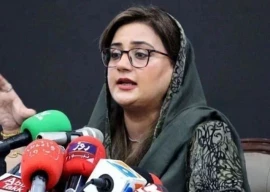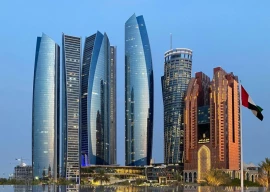
The power crisis in Balochistan has worsened from its already nightmarish levels after two power pylons were blown up Friday night, possibly by Baloch separatist militants, in Dera Murad Jamali.
Two power pylons, carrying 220 kilovolt transmission lines, were blown up by the separatists in Chattar, an area near the Nasirabad district headquarters of Dera Murad Jamali. The attack is the second such assault on the power infrastructure in Nasirabad district in as many weeks, and the sixth in the last one month. An earlier assault on the night of January 24 ended up triggering a nationwide blackout that lasted for more than two days in some parts of the country.
The Balochistan Republican Army (BRA) had claimed responsibility for the previous attacks, but no group came forward to claim Friday’s attack.
The attack sparked electricity shortage in 16 districts of Balochistan to reach the equivalent of 82% of demand, according to officials at the state-owned National Transmission and Dispatch Company (NTDC), which owns almost the entire electricity transmission infrastructure in Pakistan, including the two pylons blown up. “Only 200 to 300 megawatts of electricity is being supplied to major parts of Balochistan, while demand is closer to 1,650MW,” an NTDC official told The Express Tribune.
Yet, despite more than 24 hours elapsing since the attack on the pylons that plunged much of Balochistan into darkness, NTDC officials could not start the repair work on Saturday because they have yet to receive security clearance from the government. Officials were unwilling to say why the security clearance has not been given though they stated that they would not be able to start work without it.
“It is a troubled area in Nasirabad where officials do not work until foolproof security arrangements are not adopted with the deployment of Frontier Corps and police,” NTDC sources told The Express Tribune. The officials were hesitant to name who they believed was responsible for the attack. “Unknown persons have bombed two power pylons on Friday night. The pylons fell down and were completely destroyed in the explosion,” said one government official who wished to remain anonymous. NTDC officials say that power outages last for between 20 and 22 hours in most parts of Balochistan and eight to ten hours in the provincial capital Quetta. Yet despite the lengthy outages, NTDC officials appear to be in no hurry to fix the problem. “The repair work will start after receiving security clearance in the area,” NTDC sources said. “It would take three to four days to complete the repair work once it is started.”
By comparison, the government was able to restore power to Islamabad and parts of Lahore within five hours of the January 24 attack.
Nasirabad is one of the most impoverished districts in Pakistan, and one afflicted with a Baloch separatist insurgency over the last several years. Baloch separatists believe that the government of Pakistan is exploiting the abundant natural resources of Balochistan, particularly in energy, and hence have taken to attacking the energy infrastructure in particular, including power transmission lines, and oil and gas pipelines.
The province produces close to a quarter of the country’s natural gas supply and gets to use almost none of it. Royalties paid on natural gas to the provincial government of Balochistan were, until 2010, a quarter of the royalties paid to Punjab for its gas reserves. And despite having over 10% of the country’s electricity generating capacity, Balochistan frequently gets less than 3% of the supply.
Published in The Express Tribune, February 8th, 2015.
1737426578-0/Untitled-design-(65)1737426578-0-405x300.webp)


1737416356-0/Trump-(9)1737416356-0-165x106.webp)



















COMMENTS
Comments are moderated and generally will be posted if they are on-topic and not abusive.
For more information, please see our Comments FAQ